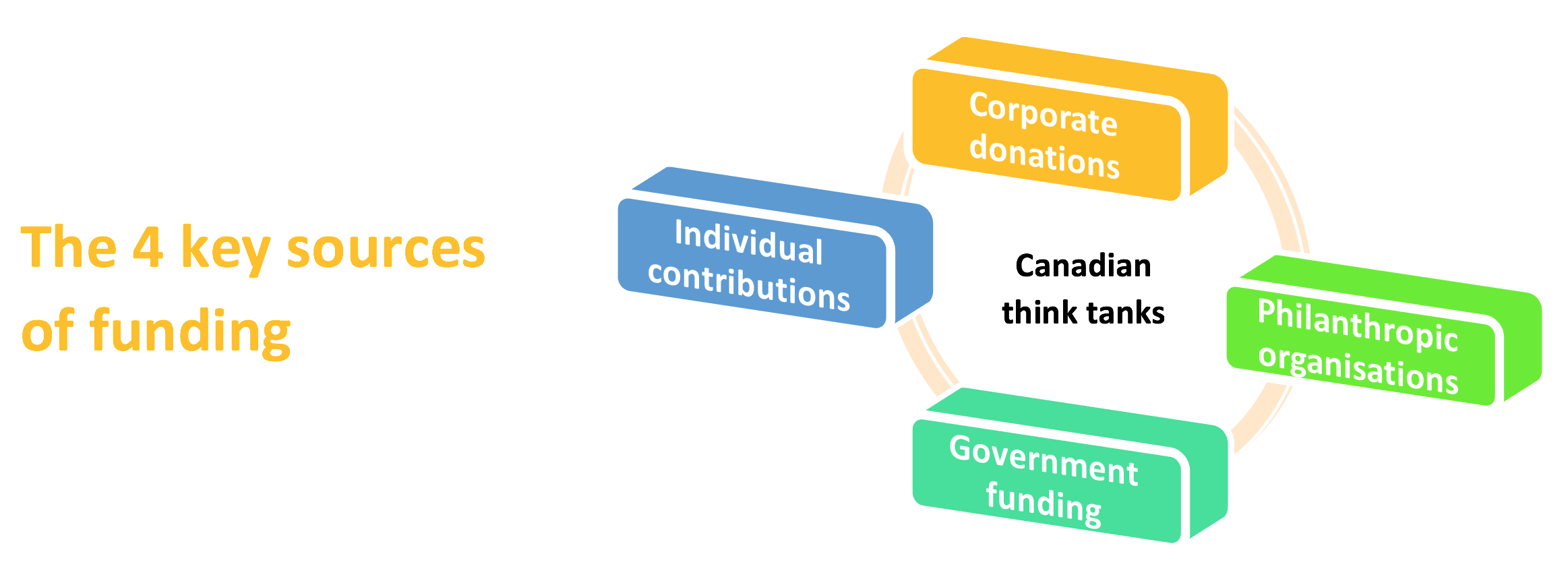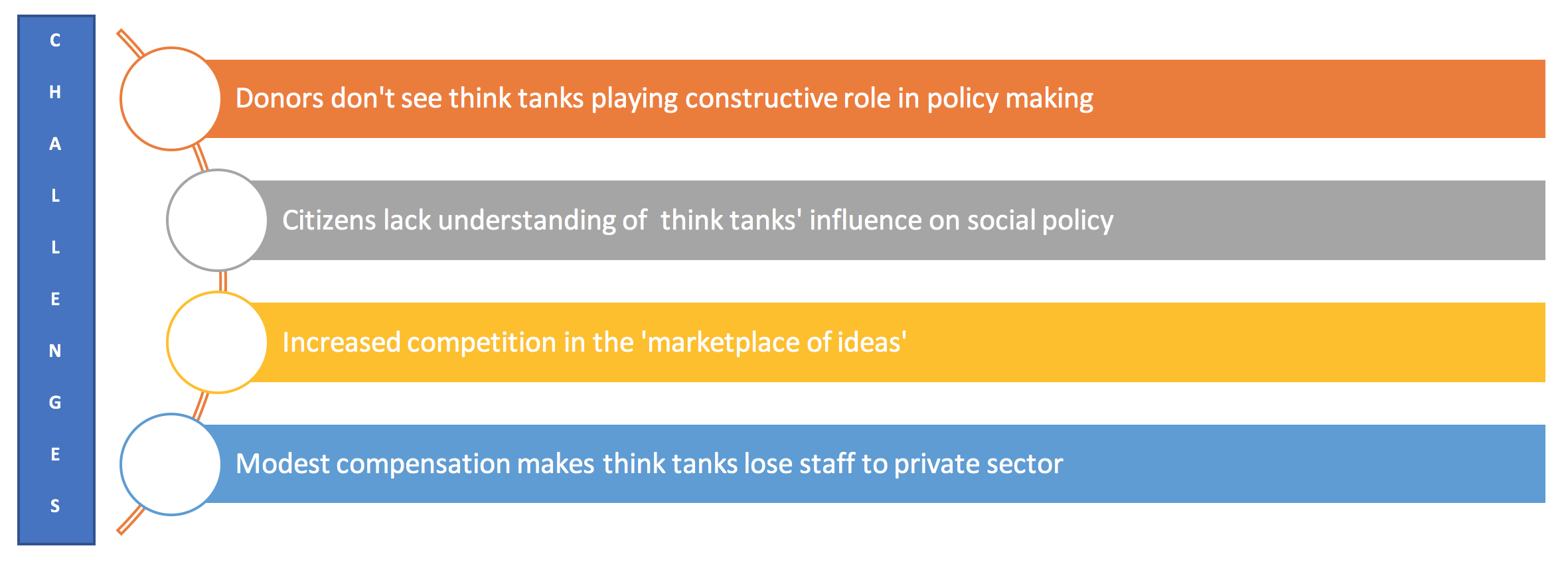Think tanks in Canada face concerns similar to their US counterparts. Funding, of course, is a key challenge. + Sustained and unconditional grants are the most coveted route. Christopher Rastrick, author of Think Tanks in the US and EU: The Role of Policy Institutes in Washington and Brussels,+ talked to Annapoorna Ravichander and Bhaswati Mukhopadhyay about the challenges Canadian think tanks face and some strategies they can implement to overcome them.
Annapoorna Ravichander and Bhaswati Mukhopadhyay: What are the key funding sources for think tanks in Canada?
Christopher Rastrick: Many Canadian think tanks pursue a diversified funding model instead of relying on a single donor or endowment for their operational activities. They primarily rely on three principal funding sources: philanthropic organisations, corporate donations and individual contributions. There’s, of course, usually a disproportionate degree of funding from one constituency over another.
For several think tanks in Canada, government subscriptions or grants are another important funding source. However, the think tanks that receive government funds often do not publicise it, for one reason or another. Sometimes the reasons are even strategic. Some think tanks, especially those that have ideological proximity to the government, rely on its funding for garnering core and project-based revenues.

The golden goose of the Canadian think tanks (across many jurisdictions), however, is the untied and sustained grants. This is the most coveted funding route as it provides a consistent source of funding without operational constraints (such as specific line-item appropriations). It is not a surprise then that this type of funding is more difficult to secure.
AR and BM: How receptive are the corporations to Canadian think tanks’ funding requirements?
CR: The extent of funding often hinges on the relationship that those at the helm in the companies and in the think tanks have. If the senior leadership at both ends have a long-standing relationship, an ideological alignment or see policy issues through the same lens, funds are easier to come by. The research output of a think tank will have zero discernible impact on a corporation’s day-to-day operations. Hence, sustained corporate-think tank relations often boils down to a strong personal connect between the leadership.
This is, however, a double-edged sword.
On the one hand, a professional or personal relationship between the leadership makes it easy for the funds to flow, sometimes for decades at a time. On the other, a change in leadership at either end may warrant a re-evaluation of the funding dynamics from the corporate side.
It is sometimes even suggested that a corporation will donate to a think tank to shape the policy debate or influence the decisions of key policymakers or to fulfil similar other ambitions.
A rational corporation would rather accomplish these goals by engaging the services of a lobbying or public relations firm. Corporations, of course, know this. In fact, many larger corporations, especially those in heavily-regulated industries, have dedicated teams to focus on public and government relations. Any one from these organisations would admit that a dollar spent on a think tank versus that on a lobbying campaign are not the same.
Therefore, all the more reason to attribute corporate funding to the relationship between their respective leadership, given that there’s no direct benefit to the corporations.
AR and BM: What are the key challenges Canadian think tanks face and what is their strategy for staying self-reliant?
CR: The think tanks in Canada have stayed self-reliant by incrementally expanding their revenue base year-on-year and by maintaining a diversified funding strategy. It is rare for a think tank here to experience considerable year-on-year growth or see an inflow of funds like, say, an American think tank. When compared to think tanks in the US, both the monetary contributions (those that run into multi-million dollars) and also, therefore, the budgets, are really insignificant in Canada.
There are, of course, potential explanations for this.
On the one hand, the argument can be Canada’s institutional setup has made it challenging for Canadian think tanks to exert a meaningful impact on the policy-making process. The corollary to this is that donors do not perceive think tanks as having a comparative advantage in engaging with and influencing policy makers in a meaningful way. Without a constructive role in the “ground game” of policy-making, Canadian think tanks focus much of their efforts on shaping and influencing the contours of debates around public policy issues (i.e. “air game”).
But, can the think tanks exclusively rely on the “air game” of public policy in pleading their importance to donors? Maybe not. The donors may not be convinced of the level of impact these think tanks will actually have on decision making. And, they could well be seen as stale and staid, by echoing the same talking points on the same network/opinion columns ad nauseum.

On the other hand, the modest funding could be a reflection of the limited value Canadian think tanks bring to their target constituencies, the irrelevance of think tanks to Canadians’ lives or, more likely, a combination of these and other factors. Many Canadians do not have a clear understanding of the role think tanks play in the Canadian polity or their contribution to the social system.
The result is that in order to secure high-value untied or endowment funding, Canadian think tanks have to strike a chord with the donors regarding the contributions they make to enhance the lives of Canadians.
Funding challenges apart, Canadian think tanks, much like their US counterparts, are facing increased competition in the “marketplace of ideas.” Large banks and management consultancy firms are increasingly developing their thought leadership capabilities, thereby encroaching on the think tanks’ area of expertise. This is a major challenge for think tanks. For one, the banks and consulting firms have considerably more resources than think tanks, in terms of finances, personnel and visibility. Second, “private” thought leadership is not usually bound by donors or grants, meaning that their output is very flexible in terms of messaging, scope of peer review, timelines, etc. And finally, the Canadian think tanks often compensate their staff at levels well below salaries in the private sector. This means that there will almost certainly be a “brain drain” of staff from the think tanks to these large players.
AR and BM: Are Canadian think tanks experimenting with any new sources of funding that others haven’t yet explored?
CR: One fallout of this kind of a funding environment and ecosystem has been that the Canadian think tanks have turned their attention to activities and outputs that might not consistently result in multi-million-dollar endowments, but will continue to “pay the bills.” One interesting trend that has emerged is the increased attempt to use events and other fora as a net-positive revenue stream. Such events have opened opportunities for ticketed revenues as well as more lucrative sponsorship opportunities for think tanks. While every think tank in Canada would be happier to receive a multi-million-dollar cheque than execute a logistically challenging policy-focused event, the disruptive funding climate has forced them to look for ways of adding revenue streams while attempting to make an impact in the public policy space.
AR and BM: Is their research agenda need based or donor based?
CR: The research agenda of a think tank is likely to be influenced by various factors and priorities, and there’s no single template or formula for it. Nevertheless, there are some differences in the setting and execution of research agendas, depending on the size of the think tank, terms of funding and scope of policy mandate.
Within the smaller, issue-specific think tanks in Canada, the research agenda is largely driven by donors, often as part of a tied grant or specific research agreement. This makes sense, as these smaller think tanks usually have expertise and comparative advantage in a particular policy space. Several smaller think tanks in Canada have managed to make a strong contribution in their specific sub-field, often with a very modest budget.
Larger think tanks, on the other hand, have managed to balance their research agenda between what donors are looking to fund and what the given think tank deems relevant in its institutional mandate, public policy space and constituent preferences. While the larger think tanks often pursue grants or other contracts with a specific deliverable, the general rule of the thumb is that these larger Canadian think tanks enjoy more flexibility in their research program.

